Early Verdict
The Roubaix SL8 adds an extra degree of compliance and comfort but still feels like a performance road bike
Pros
- +
The Future Shock 3.0 feels plusher and is more adjustable
- +
Stiff, performance-focused frame and ride feel
- +
Power meter chainset as standard
Cons
- -
Some riders may desire a lower front-end
You can trust Cyclingnews
The Specialized Roubaix has been around for twenty years now and over those two decades the Roubaix platform, has like pretty much everything else in the bike industry, changed, grown and seen a lot of refinement. We've seen it ridden by the likes of Tom Boonen in the monuments and spring classics when the bike featured the vibration-damping Zerts inserts, and by Peter Sagan when he claimed victory in Paris Roubaix in 2018 after the introduction of the Future Shock suspension system back in 2016.
We covered the last update the Roubaix received back in 2019, and fellow Tech Writer Will Jones covered the outgoing Roubaix Expert in his own review. The time is now right for Specialized to announce the arrival of the Roubaix SL8. If you're already wondering, yes the Roubaix has now received the 'SL8' model name as well. Linking it with the Tarmac SL8 as the brand's top-end race bikes.
The Roubaix SL8 is categorised as an endurance road bike, though it is certainly capable of tackling some gravel terrain. Yes, it's still a performance road bike, but it's going to be more comfortable with more relaxed geometry and specific compliance-boosting features to aid rider comfort but more on this further in.
You can read about our news piece on the launch of the new Roubaix SL8 for lots of the specifics on the bike, This piece will focus on my first ride impressions. So summed up, what's changed with the new Roubaix SL8? Well, straight off the bat there is a brand new Future Shock suspension system termed Future Shock 3.0. This is actually subdivided into Future Shock 3.3, 3.2 and 3.1 units depending on bike spec. The frame has also been lightened by around 50 grams, and the silhouette has changed slightly with a new fork and down tube shape in particular aiding aerodynamics.
There is boosted tyre clearance, up to 38c (or 40mm in real terms accounting for the extra plumping that wider rims provide) front and rear. Depending on where you live in the world or the type of riding you do you may be rejoicing at this so get ready; The bike is now capable of accommodating full-length fenders or mudguards. This was something that wasn't possible with the old frame. Yes, you could fit clip-on guards, but they don't offer the same coverage and fit as a set of full-length bolt-on fenders do.
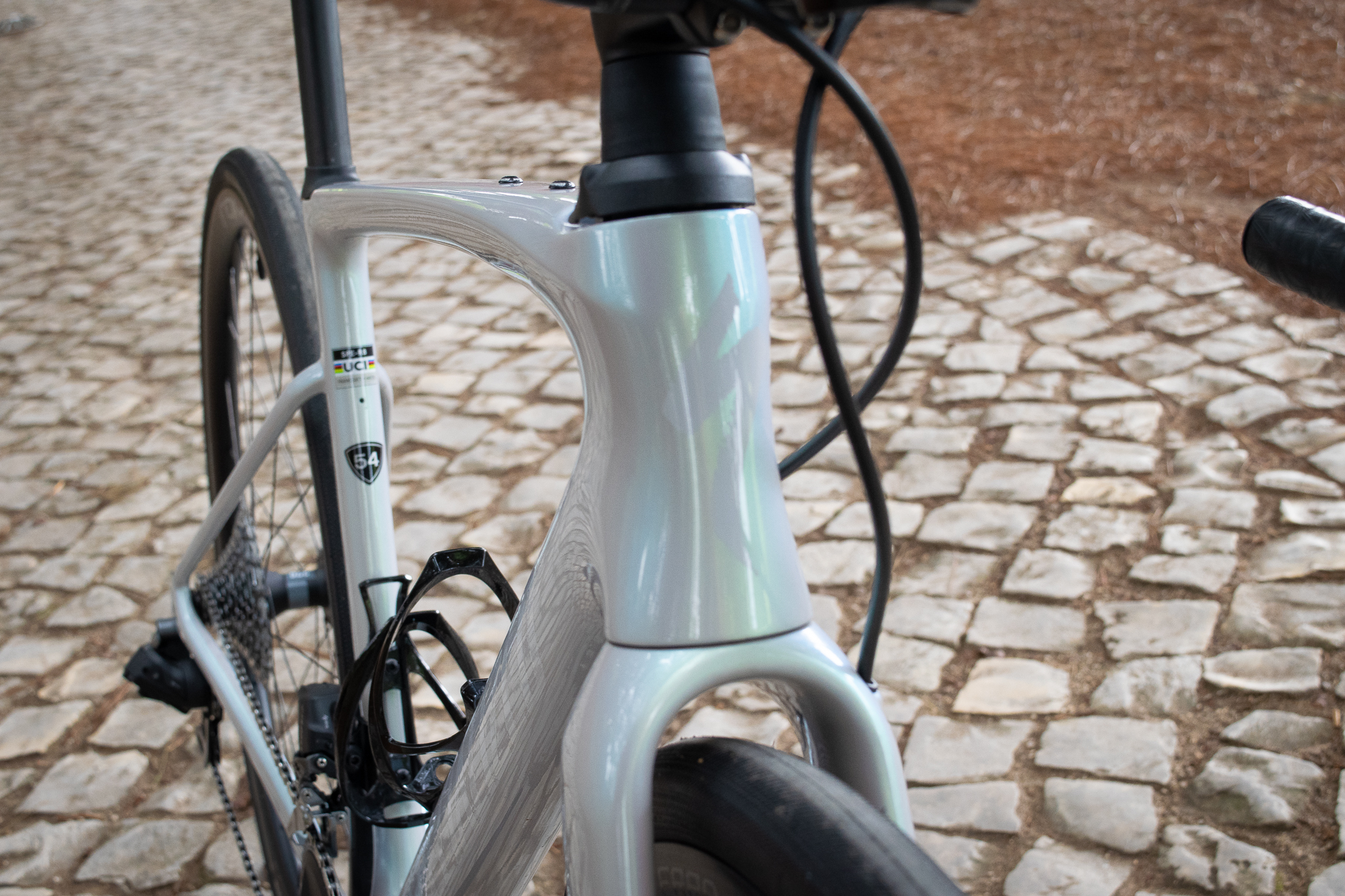
Design and Aesthetics
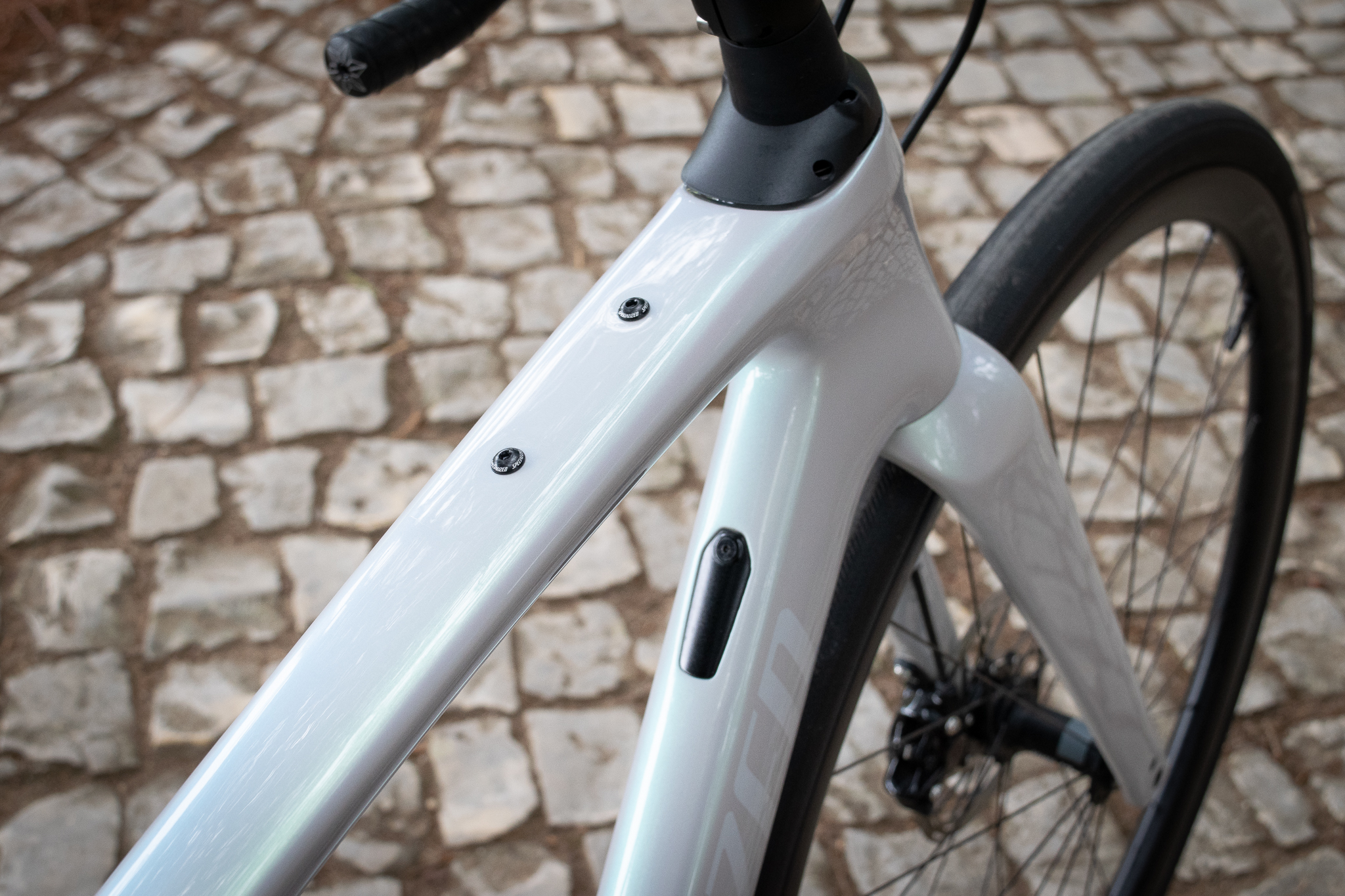
Aesthetically, there isn't a huge amount of visual frame change between the outgoing Roubaix and the new SL8. An overlay of the two bikes shows the new bike has seat stays which are dropped a little more, the aforementioned fork redesign and an altered downtube shape but overall the silhouette generally remains similar. In short, it still looks like the Roubaix you will be used to seeing.
Paint-wise, Specialized has gone for block colour schemes with contrasting frame paint and Specialized logos. Three frames are available in just one colourway each including an eye-catching 'metallic pine' which is a little like British Racing Green for me. My own SL8 Expert test model came in the 'Dove grey / Chameleon lapis' colour which can be seen in the photos. It was understated but had a nice depth and lustre that I really liked.
The latest race content, interviews, features, reviews and expert buying guides, direct to your inbox!
Aesthetics chat means touching upon the Future Shock suspension system and how that in itself affects the looks of the bike. To be honest, I don't think the system affects much looks-wise. I'd be the first to say if an added suspension system or other gizmo ruined a bike's aesthetics, but it just works and seems to fit in visually.
Perhaps it's the years of seeing Future Shocks now that have made us (or at least me) used to the look, but I don't think it looks particularly out of place. No, the stem isn't super low which does look great most of the time, but the Future Shock rubber boot is subtle and the shaped top cover provides a pretty seamless transition into the head tube.
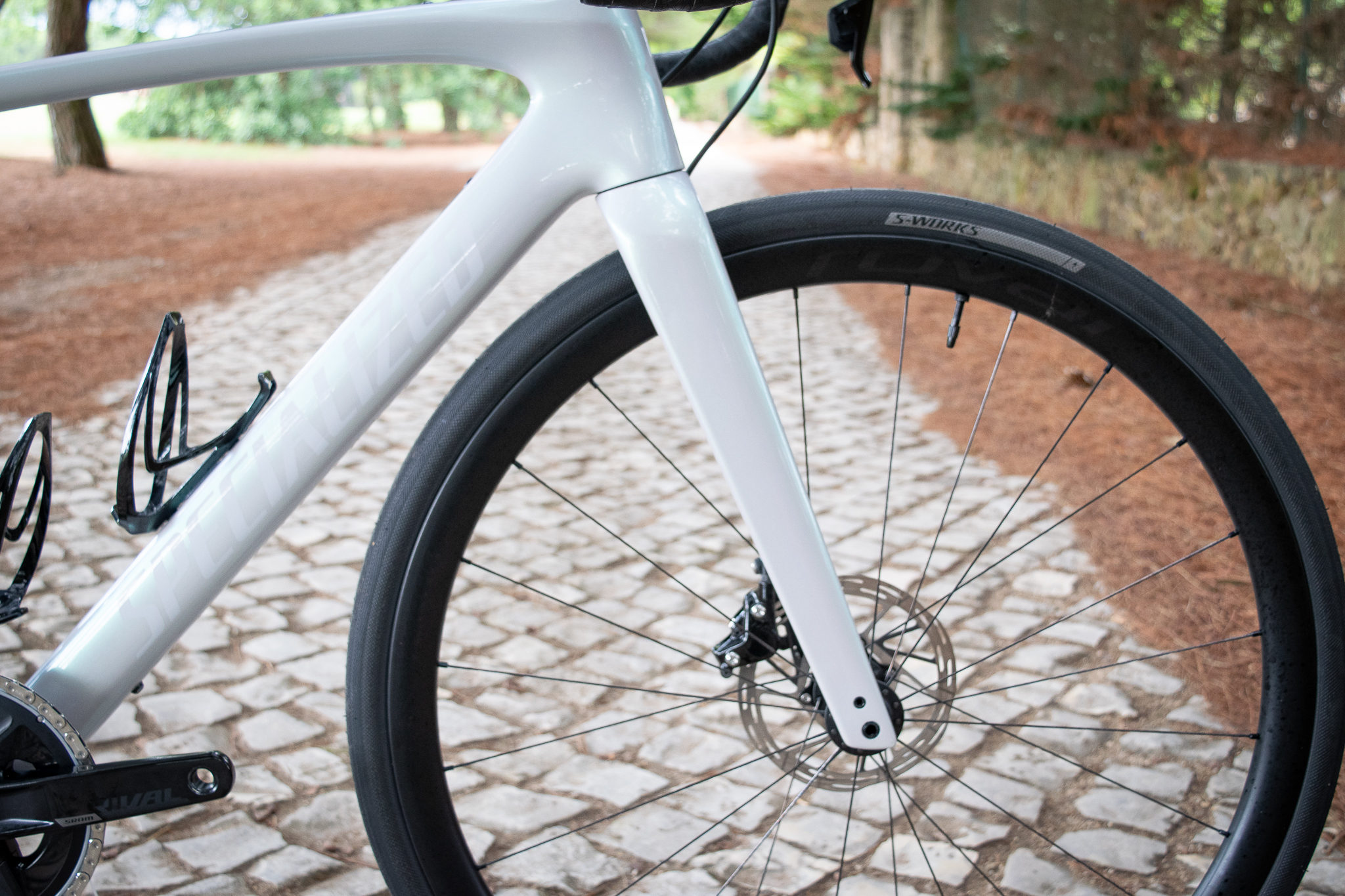
A key design feature of the Roubaix SL8 is the new Futureshock system. The system has been around since 2016 and has seen a fair few changes and updates during this time. The Future Shock 3.0 comes in three spec tiers and gets a hydraulic damper as well as add-in preload spacers to further tune the feel of the shock. My own SL8 Expert model was fitted with the Future Shock 3.2 which has the new hydraulic oil damper but has the pre-load permanently pre-set to the smoothest setting.
Aimed at reducing fatigue by smoothing out vibrations and hard bumps over time, Specialized claims it has tested rival brands' endurance road bikes over a set test which saw a rider hitting bumps at a set speed multiple times, resulting in a 53% reduction in impacts compared to those competitors. The result? The smoothest road bike in the world they claim.
We hear and read a lot about compliance on bikes. What is compliance and how can we define it? Well, Compliance can be described as deflection under load. Or flex under load if you like. When a bike is stiff and unforgiving it can feel harsh and leave you feeling beaten up over time. I acknowledge plenty of riders like this feeling and prefer their fastest race bikes to feel stiff, fast, and even harsh. I myself am slowly dealing with and musing on this point, and sometimes have to remind myself stiffest isn't always fastest. The Roubaix is the perfect example of the movement in road bike technology pretty much across the board in recent years with the aim of introducing more comfort and lowering fatigue which should make us quicker overall.
Aside from the Future Shock updates, there were a couple of features on the bike I liked; There isn't internal cable routing, which really does not bother me in the slightest, it will make your (or your mechanic's) life that little bit easier and save you cash when it's time for a service. The same can be said of the threaded bottom bracket whilst we are on the subject. I was also told executing integrating cabling with the Future Shock would essentially be a right pain so that's been left alone. However, fit the more aero Roval Rapide handlebars and Specialized quoted me a 10-watt potential saving which I think will excite some riders. If however, you want all-out speed and a faster bike, I guess Specialized would say look to the Tarmac SL8.
At the mention of servicing, another feature I also liked was the inclusion of a small circlip on the underside of the seat clamp wedge preventing you from winding the bolt all the way out. This means you can't undo the clamp so much that the lower part falls down the seat tube and you end up holding the bike upside down shaking it to jiggle the clamp piece out again.
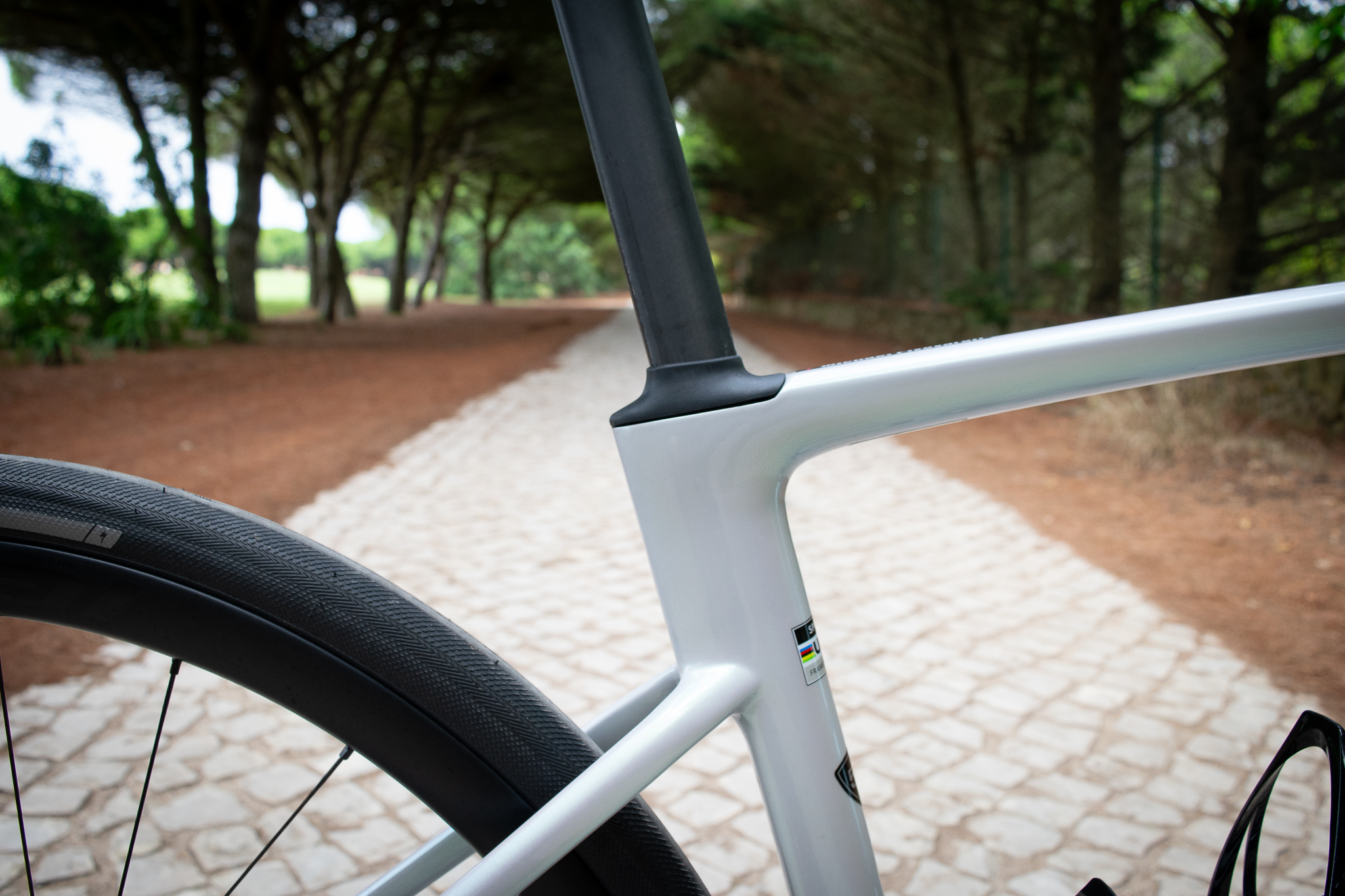
Spec and Build
As mentioned, I rode the Roubaix SL8 Expert model which sits below the S-Works and Pro models. The Expert model comes specced with a 2X Rival AXS groupset with 33/46T chainset and 10-36T cassette so realistically you are going to be able to get up anything with these ratios.
The Rival chainset has the integrated power meter included as standard which is great to see and I paired it with my computer straight away without issue. It's pleasing to have a power meter fitted from the off on a bike and eliminates another purchase later down the line unless you really have your heart set on a certain power meter unit.
Wheels are the Roval Terra C models with DT Swiss 370 hubs which are an OEM offering for Roval so you won't find them listed on the DT Swiss website. They were shod in 32mm Specialized Mondo tyres, but with clearance for up to 40mm tyres you could easily throw on some gravel-specific rubber and take the Roubaix off-road.
The finishing kit is comprised of a Specialized alloy Hover bar which has a 15mm rise from the centre and has a pre-drilled hole for di2 wiring should you require it. The seatpost is the Specialized S-Works Pavé which is meant to have a carbon layup to add compliance a concept along the same lines as the seatpost on the Canyon Endurace CFR that I recently tested. The saddle was a Specialized Power Expert in a 155mm width, which I got on well with; it's a pretty neutral option that should suit a lot of people even if it isn't perfect.
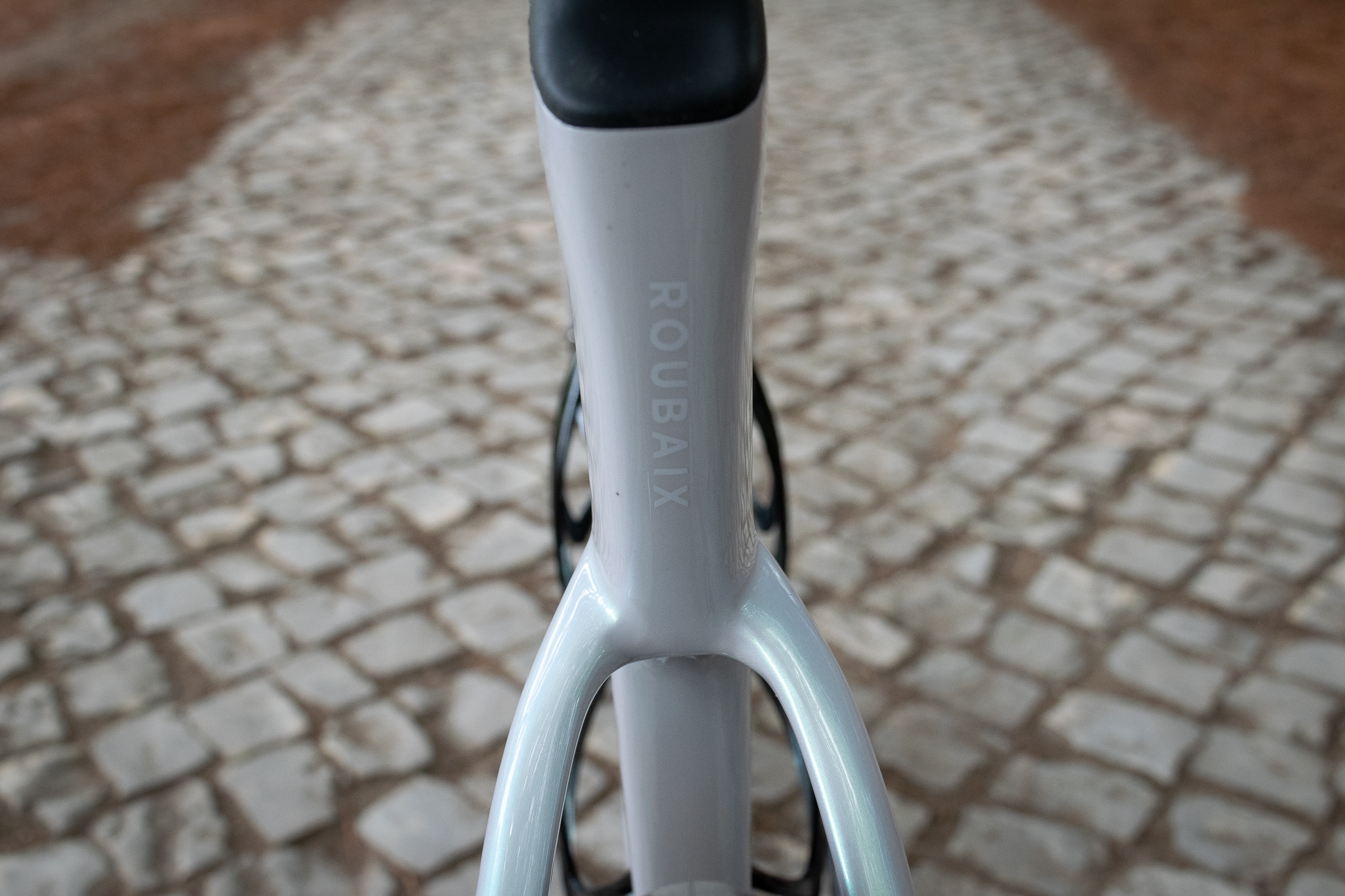
Performance
The launch for the Roubaix SL8 was in Cascais, Portugal, near the Unesco World Heritage area of Sintra. I was able to cover Just over seventy miles on the bike across two rides. After a particularly drab summer in the UK, I was met with similar weather in Cascais with grey skies and the threat of rain looming overhead. My first ride aboard the Roubaix was something of a baptism of fire. It turned out to be a technically challenging ride that was excellent for testing a bike.
As mentioned my own test model was the Roubaix SL8 Expert. Aside from adjusting my handlebar roll on the first day my size 54cm test model was perfectly set up for me which helped me feel comfortable from the off and let me focus on riding the bike. If you end up shopping for a bike yourself I'm about 176cm tall and have fairly short arms and longish legs. I'm 65kg which I've mentioned here as weight may affect shock setup and performance (my bike had the medium spring).
The first day's ride began spinning along with the beach before turning inland for some climbing, both on steep tarmac and even steeper, wet cobbles. After this cobbled climb and into the next the heavens well and truly opened for a sustained period and though it was warm we were all soaked in no time. Luckily I've started pretty much every ride for the past few months in the UK with a rain jacket in my pocket and was glad this habit had remained and that I could pull mine on in the driving rain.
The wide-open longer climb and steep, slippy cobble climb were great tests for the Roubaix, I climbed in the group on smooth tarmac with the Future Shock locked but opened it up for the cobbled beast for a comparison. The Roubaix climbed well and certainly didn't feel it was slower or lacking in stiffness or purpose. I had zero wheel slips on the cobbled climb, staying seated to control traction and keep the front end controlled, the Roubaix tackled it easily.
We moved into a pretty technical and twisty, off-camber descent with streams of running water and the Roubaix performed really well. The 32mm Mondo tyres were set up with 52 PSI for the front and 55 PSI in the rear. I left them as the mechanics had set them up for the initial spin and they rode well and still felt zippy on quicker tarmac.
They seemed to offer great traction and grip and I felt pretty comfortable given the terrain being tackled. I felt in control and the feel from the tyres gave me confidence. The higher front end and stack also help when hooking into the drops for longer periods and the genuinely challenging descent was ticked off without incident. I think this was as good a test as any for the bike and it provided confidence-inspiring handling without ever dulling rider feedback.
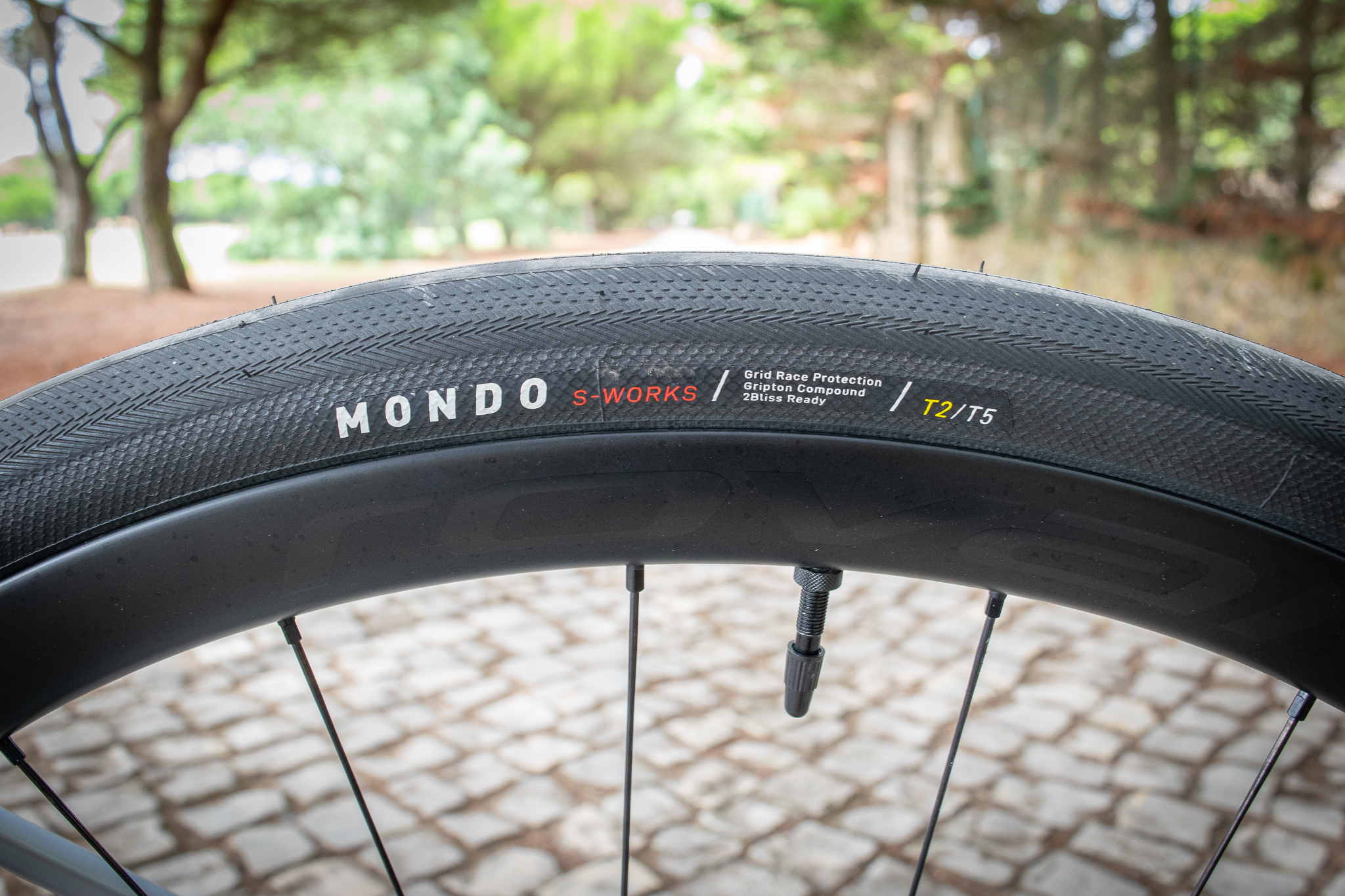
In terms of my experience with the Future Shock system I've ridden the previous version on both Roubaix and Diverge models. The Diverge gravel bike had a more basic version without lockout I found it far too soft and easily bottomed out.
The Futureshock 3.2 my Roubaix SL8 came with felt very different and was a lot more to my liking. There is a far wider range of adjustability and each click does something now, rather than a binary on/off feeling. It was stiffer and plusher and when out of the saddle I couldn't feel it bobbing around or moving much but when I looked down over certain sections I could see the rubber boot working away.
This is obviously quite a specific area and different riders will want different things. For the majority of my own riding and my home terrain, I think a firmer setup would suit me and my riding with the new Future Shock gave a good insight into the new unit's feel and capabilities. If riders may have been put off by shock 'bob' or unwanted movement in the past there is now a lot more adjustment available to configure the unit to your liking. Yes, you could change spring rates before but the hydraulic damper has moved things on again. I also saw first hand a spring rate change and the job is simple and easily tackled by a shop or home mechanic.
Something I didn't really have time to do was get properly cracking on along the flat and get some power down for a longer period. We did spend a decent amount of riding bowling along on the flat and the bike hummed along nicely and felt nippy with the shock both locked out or open, and the higher front end allowed me to lock into an aero position on the hoods and sustain it. The shorter, taller geo probably suits my shorter arms and I can tuck into an aero position but some riders I feel may want to get lower, which can handily be achieved easily enough thanks to the non-integrated cockpit. The Future Shock unit does put a limit on how low you can go overall.
The Sram Rival brakes I have to say were excellent, stopping very consistently in both the wet and dry. I had to properly hang off them once or twice and they didn't falter. I experienced minimal rotor rub and only some light howl after a soaking. Shifting was good, not amazingly fast or smooth in my opinion but solid enough.
Early Verdict
After my two rides, I think the Roubaix SL8 will provide another strong and interesting chapter in the Roubaix story. Yes, it sits in the endurance road bracket, but it's a performance bike without a doubt. It's stiff and rolls along very well on the flat. And let's not forget with a few changes some of the very fastest riders in the world are competing on this platform primarily during the first part of the year at the classics.
However, it's a bike that's about reducing fatigue and adding the right amount of comfort by the use of compliance-boosting features, but it stays on the right side of the line with this so that the bike retains its purposeful, fast ride quality. I think If I tried to sum the compliance features up I'd say they are there and they are noticeable, but there's just enough of them and you can adjust them to your preference to a far greater extent now.
What did become clear to me is that there is a wide range of adjustments and tunability with the 3.0 Future shock system. I feel confident in saying almost every rider is going to be able to find a setup that feels right for their riding style and requirements.
The Roubaix tackled all the terrain I rode on with ease, it felt stiff and capable when climbing, tackled tricky descents with ease and responded well when I put the power down in or out of the saddle. However, I do believe the 32mm tyres and Future and After Shock tech should mean finishing rides less beaten up and fatigued. If you can save energy along the way it should mean you have more to put through the pedals when you need it, right?

Tom joined the Cyclingnews team in late 2022 as a tech writer. Despite having a degree in English Literature he has spent his entire working life in the cycling industry in one form or another. He has over 10 years of experience as a qualified mechanic, with the last five years before joining Cyclingnews being spent running an independent workshop. This means he is just as happy tinkering away in the garage as he is out on the road bike, and he isn’t afraid to pull a bike apart or get hands-on with it when testing to really see what it’s made of.
He has ridden and raced bikes from an early age up to a national level on the road and track, and has ridden and competed in most disciplines. He has a keen eye for pro-team tech and enjoys spotting new or interesting components in the wild. During his time at Cyclingnews, Tom has already interviewed some of the sport's biggest names including Mathieu van der Poel, Tadej Pogačar and Alberto Contador. He's also covered various launches from brands such as Pinarello, Ridley, Specialized and more, tackled the Roubaix Challenge sportive aboard his own rim-brake Cannondale SuperSix Evo, tested over 20 aero helmets in the wind tunnel, and has created helpful in-depth buying advice relating to countless categories from torque wrenches to winter clothing.

